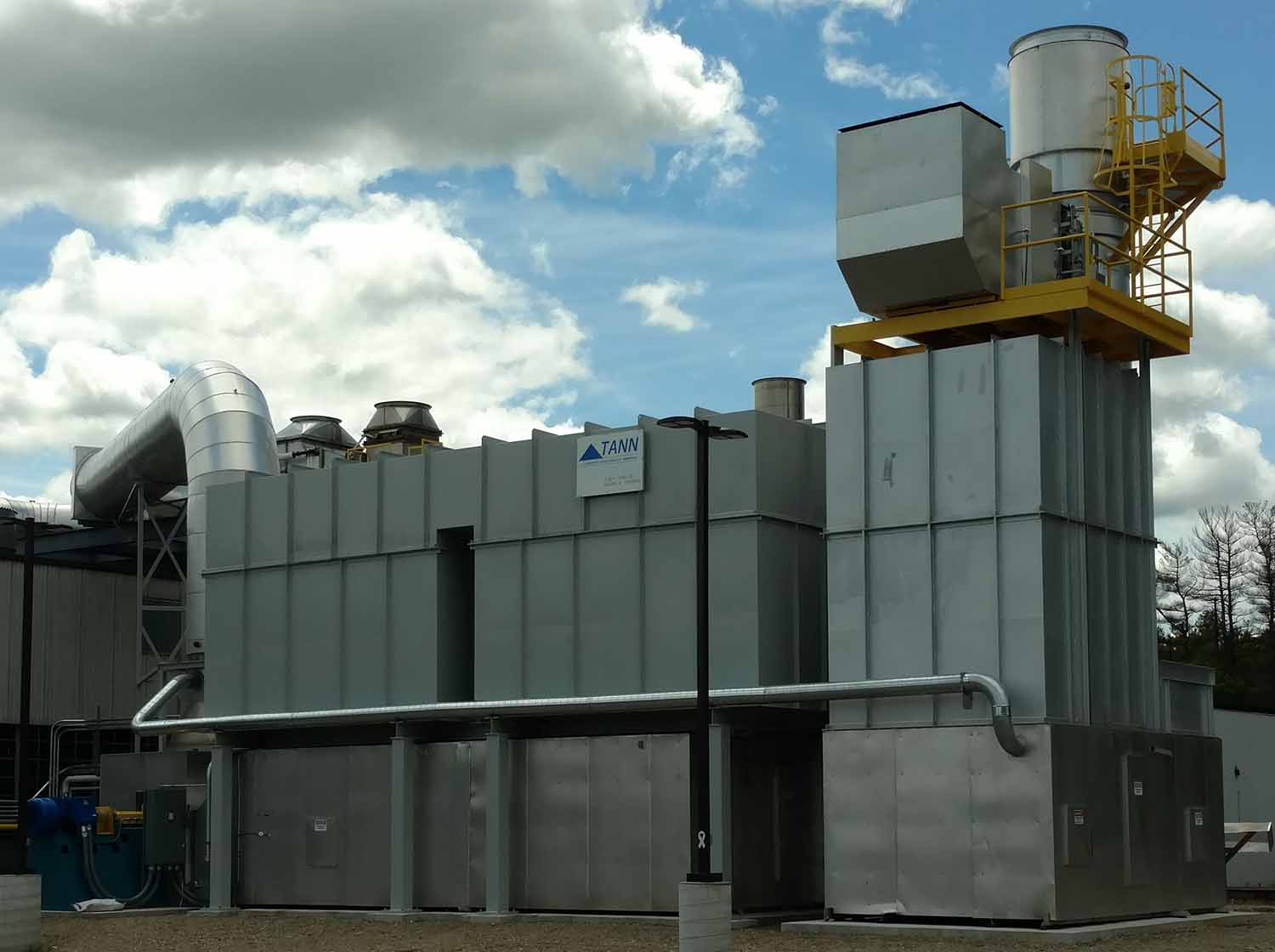Recently, an automotive interior/exterior supplier on the east coast came to TANN looking for an engineering solution to their future expansions. The customer had two regenerative thermal oxidizers that were installed in 2000 and another installed in 2011 and knew that over the next two years they would be adding ovens to increase capacity by 50,000 SCFM. TANN Corporation sent an engineer to evaluate the existing pollution control equipment and determine the best solution for this customer. Upon completion of the engineering study, TANN engineers designed a custom RTO to run in tandem with their existing pollution control equipment. Because of the high thermal efficiency of this unit, during high solvent load situations, the oxidizer will go into self-sustain mode. During self-sustain mode, the natural gas burner on the RTO shuts off, and the energy released from the VOC combustion provides enough energy to keep the oxidizer above the operating set point.
TANN engineers designed this regenerative thermal oxidizer with a puff-capture system and heat recovery in the form of an air-to-water recovery coil in the clean exhaust. The puff-capture system redirects flow during valve shifts to capture the puff of dirty air that comes from two tank regenerative thermal oxidizers. This system eliminates visible emissions and generally increases the destruction efficiency of the RTO above 99%. The heat recovery system was designed to recover 5,000,000 btus/hr to be used for building heat and preheating make-up oven air. The heat recovery system will pay itself off in less than 2 years.

